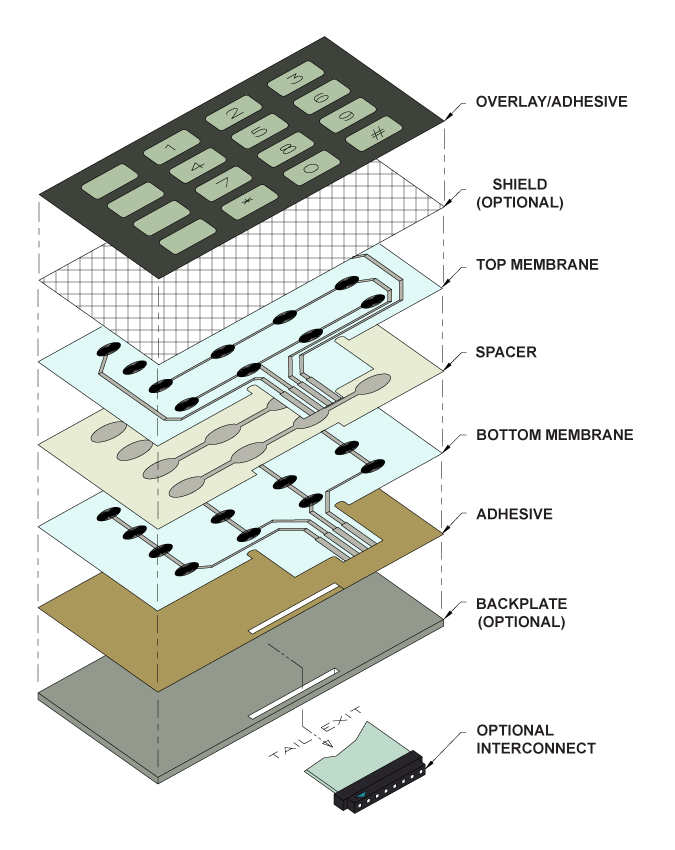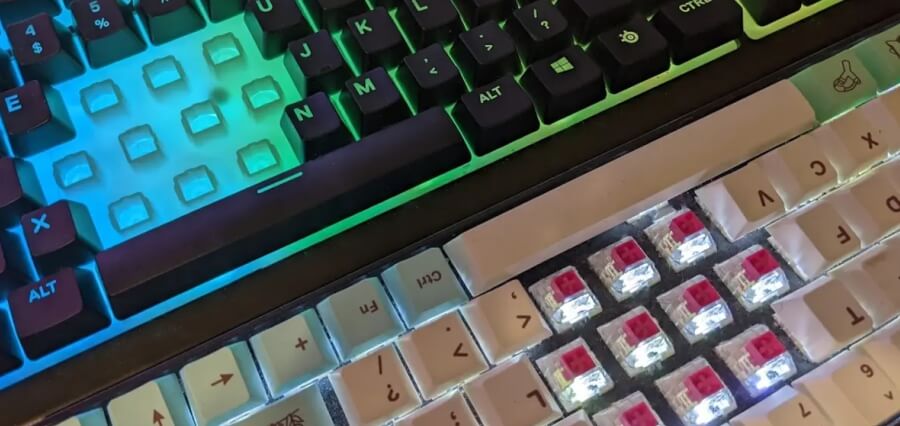Leading Advantages of Incorporating a Membrane Switch Into Your Digital Devices
Comprehending the Functionality of Membrane Switches Over for Interface Gadget
The performance of membrane changes stands for a significant advancement in individual interface layout, combining efficiency with visual convenience. As industries increasingly prioritize individual experience, recognizing the subtleties of membrane switch innovation becomes necessary.
What Are Membrane Layer Switches?
Membrane layer switches are cutting-edge user interface tools that facilitate individual interaction with digital equipment. These functional elements include multiple layers, consisting of a visuals overlay, spacer, and a printed circuit layer. The style allows for a smooth integration right into numerous electronic gadgets, enhancing both the aesthetic and practical elements of interface.
Membrane layer switches are commonly used in a large range of applications, from household home appliances to commercial equipment and clinical tools. Their building and construction typically features a slim profile, making them an optimal selection for small layouts. The tactile responses supplied by these buttons can be engineered to meet specific individual preferences, guaranteeing effective interaction between the user and the tool.
Longevity is another substantial benefit of membrane layer buttons, as they are resistant to dust, moisture, and chemicals, which boosts their life expectancy sought after environments. Additionally, these switches can be customized in terms of shape, size, and visuals style, enabling branding and user-specific functions. Generally, membrane layer switches stand for a sensible solution for improving user experience in electronic devices, integrating capability with aesthetic charm in an effective manner.
How Membrane Layer Switches Over Job
Operating on a simple concept, membrane changes use a split construction to sign up customer input properly. Each switch is composed of several layers, consisting of a published circuit layer, a spacer layer, and a leading graphic layer, which are designed to interact seamlessly. When a user presses the top layer, it compresses the spacer layer, bringing the conductive aspects of the circuit layer right into call with each various other.
This call develops a shut circuit, signifying the tool to implement a certain feature. The style enables numerous setups, consisting of responsive comments, which can enhance the individual experience by offering a physical feeling upon activation. The materials made use of in membrane layer buttons often consist of versatile substratums, such as polyester or polycarbonate, which ensure longevity and strength versus deterioration.

Secret Benefits of Membrane Layer Switches

Another considerable benefit is their density. Membrane buttons are slim and lightweight, which enables producers to conserve area in their tools without giving up performance. This function is especially advantageous in applications where weight and volume are crucial considerations.
Additionally, membrane layer buttons are immune to dirt, moisture, and chemicals, boosting their resilience. This strength expands their lifespan and lowers the requirement for constant substitutes, causing expense financial savings over time.
Moreover, the responsive responses provided by membrane layer switches can be optimized to boost user interaction. They can include attributes such as raised buttons or audible clicks, boosting use and customer experience.
Applications Across Industries
Interface gadgets utilizing membrane layer buttons are prevalent in a wide selection of industries, showcasing their versatility and functionality. Membrane Switch. In the medical field, membrane layer switches are integral to gadgets such as analysis devices and individual surveillance systems, where their durability and convenience of cleaning are crucial for preserving health requirements. In the automotive market, these buttons are utilized in control panel controls and infomercial systems, giving a smooth and modern interface for customers.
In addition, the customer electronic devices field gain from membrane switches in home appliances and portable tools, where small style and easy to use user interfaces boost individual experience. Industrial applications also utilize membrane layer changes for control board in machinery and automation systems, emphasizing their effectiveness and resistance to rough atmospheres.
In the aerospace and defense markets, membrane layer switches are used in cabin controls and tools, where reliability and performance under extreme conditions are paramount. In addition, the pc gaming industry increasingly incorporates membrane layer switches in controllers and arcade devices, contributing to an engaging individual experience. Overall, the flexibility of membrane layer switches over enables their widespread usage across numerous sectors, emphasizing their value in contemporary customer interface design.
Future Patterns in Membrane Layer Switch Modern Technology

Additionally, using advanced materials, such as polycarbonate and polyester films, is expected to rise, giving boosted durability and resistance to ecological stressors. These materials add to the total durability of membrane layer buttons, making them ideal for harsher commercial applications.
In addition, the consolidation of smart technology, including IoT connectivity, will make it possible for membrane layer click switches to connect with various other gadgets and systems, assisting in a more interactive customer experience. This fad aligns with the expanding need for smart devices across various fields, from medical care to customer electronic devices.
Finally, modification options are expected to broaden, enabling suppliers to create bespoke options customized to certain individual requirements and preferences. These growths will position membrane switches as important parts in the development of interface innovation.
Final Thought
To conclude, membrane layer changes represent a pivotal improvement in individual interface technology, providing a dependable and functional option for varied digital applications. Their split building and construction promotes small design, while attributes such as responsive comments boost user interaction. The durability against ecological aspects better solidifies their utility across numerous sectors. As developments in material science and touch sensing innovations continue, the capability and applicability of membrane switches are expected to expand, strengthening their value in modern digital tools.